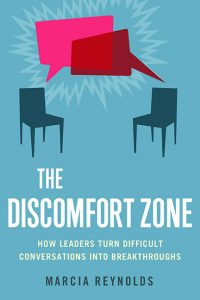
heart, and gut—while staying present to the person you are with.
Chapters Five and Six bring together the approaches explained in case studies so you can better implement what you have read. Chapter Five looks at how to break through well- established defense routines that are keeping people from making changes or handling situations in the most productive way. Chapter Six explores cases in which the leader helped people work through blocks to realize more potent ways to apply their strengths and passion.
Chapter Seven is designed to support you as you implement the skills. It will provide resources and practices that will help you feel both comfortable and competent when having Discomfort Zone conversations. You will also find ways for finding and creating communities where you can share cases, practice together, and build on the insights this book offers.
Effective leaders help others think more broadly for themselves.
The more leaders can get the neurons sparking, the greater the chance for innovation, unexpected achievement, and the continuous desire to grow. On the practical side, you will see more engagement and retention, positively impacting the bottom-line results. On the human side, the outcome is more fulfilling, for you too, as you come to appreciate the power of these conversations. The Discomfort Zone will give you the means for creating provocative conversations in which you, those you work with, and possibly your entire organization will experience a brave, new workplace built on unbridled curiosity.
You can order the Discomfort Zone at
http://amzn.to/1ozvlGJ


















